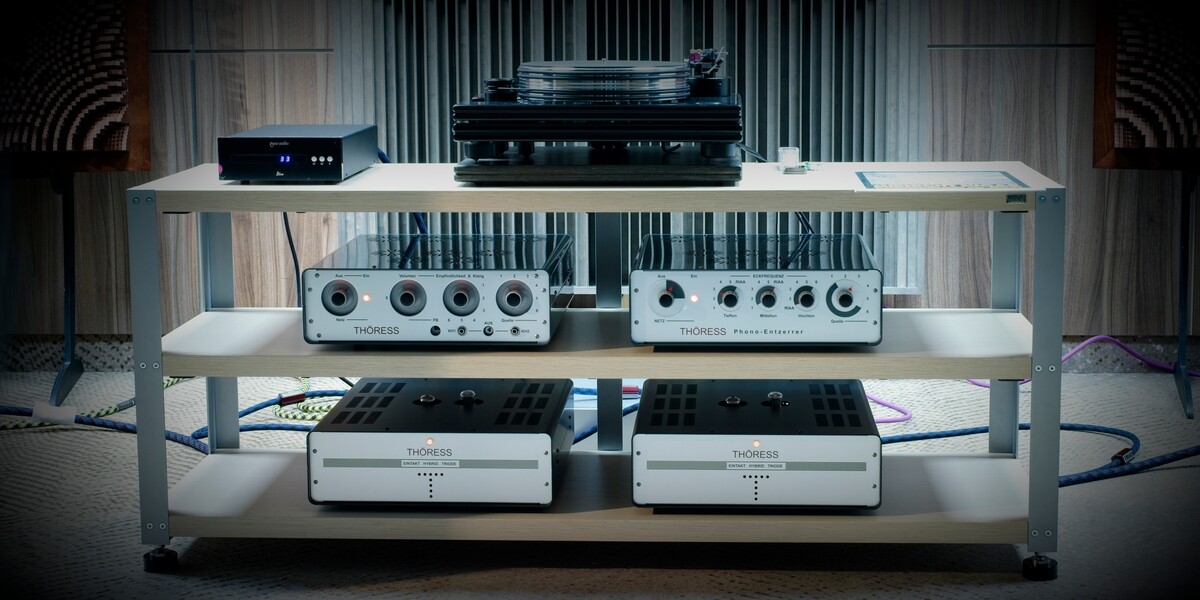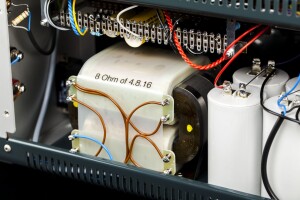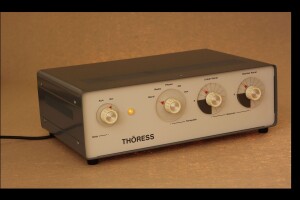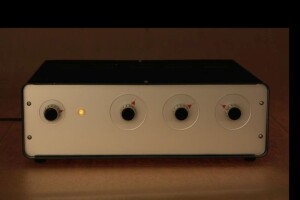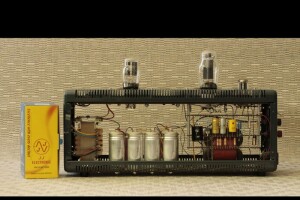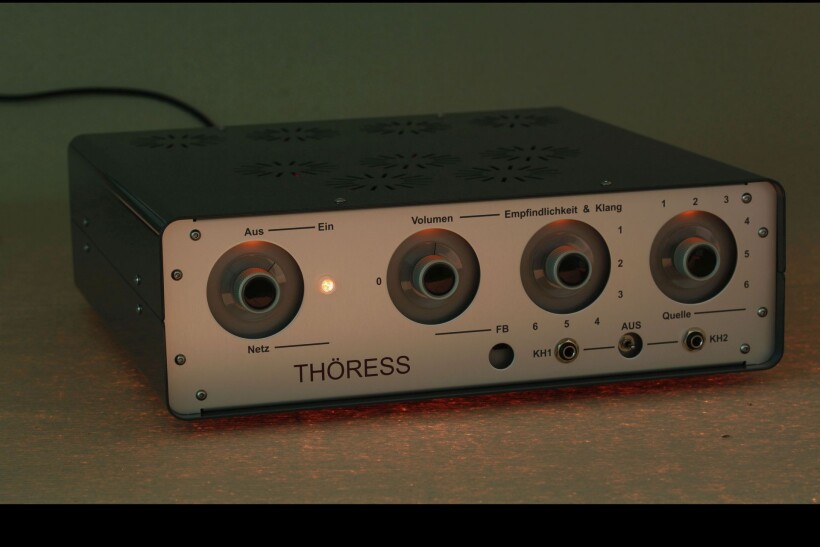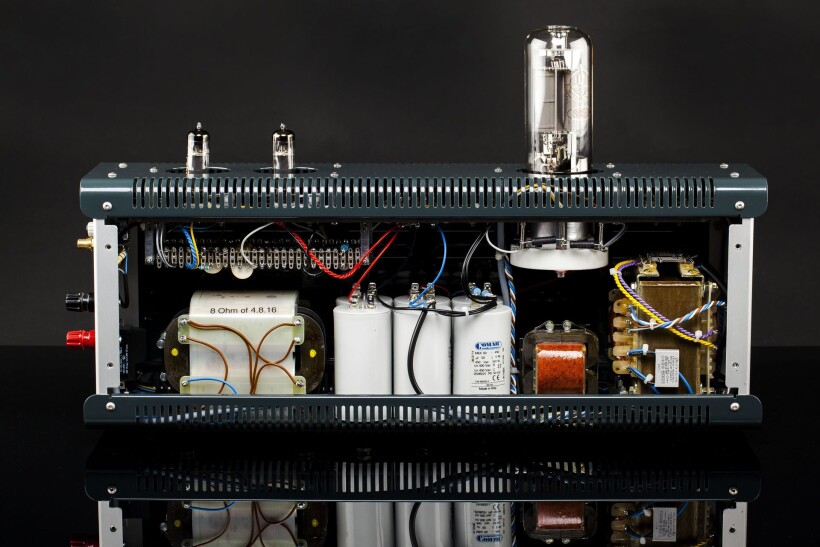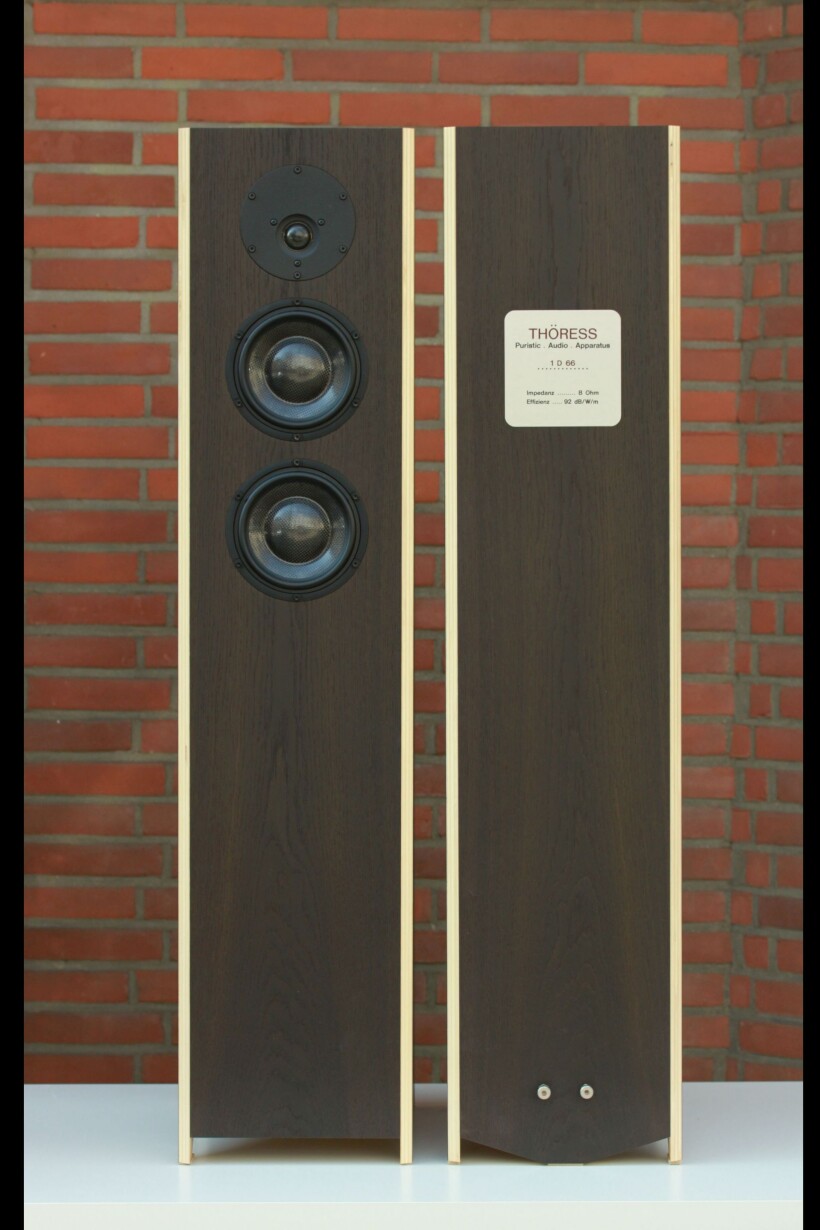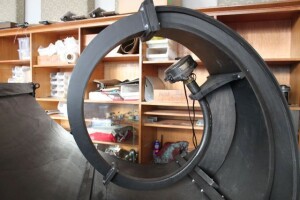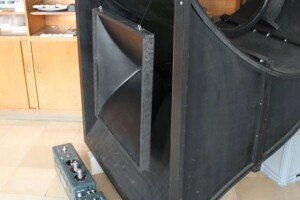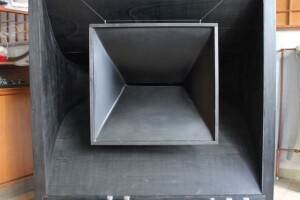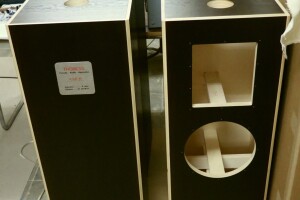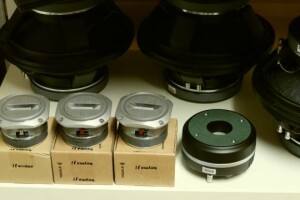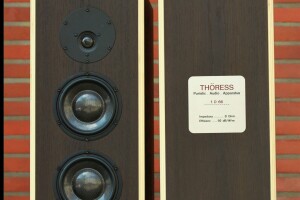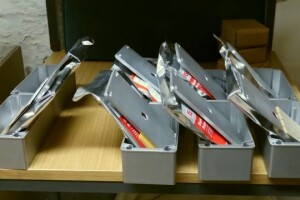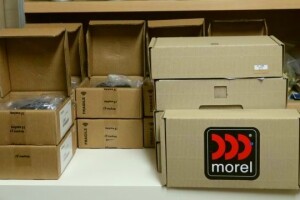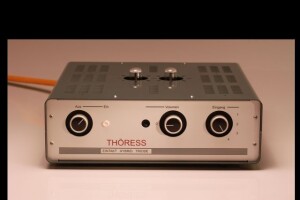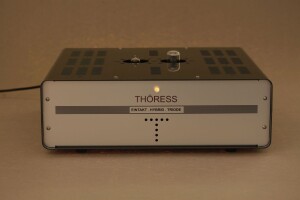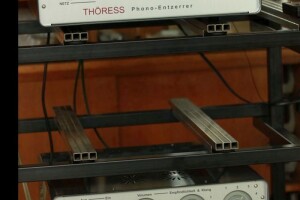As I have recently finished my review of the Thöress Phono Enhancer, a bit vintage looking, offering unique features and stunningly sounding phonostage from Germany, I thought that it might be a good idea to continue this relatively new, but hopefully interesting tradition of using such occasion to „talk” to the designer. Below you will find an interview with Reinhard Thöress, the man behind this particular, and currently nine more unique in many respects products. Feel free to treat it as an introduction, a chance to get to know Reinhard and his work a little, before you read the review, that is coming in the next few days.
Marek Dyba (MD): Reinhard, I am sure that a lot of our Readers are already familiar with the Thöress brand, you’re a head and chief designer of, but for those who aren’t lets start with a bit of a history. Could you tell us how and when did it all start for you personally, what got you into the audio industry?
Reinhard Thöress (RT): Music has always played an important role in my life. Since my childhood. Attending concerts, playing the piano, collecting and listening to records, researching good music are a big source of joy to me. I remember vividly that when I was a teenager, I used to travel to Düsseldorf after school classes frequently. Where I would spent a couple of hours in various record stores until closing time so as to move on to TONHALLE, SCHUMANN SAAL or some church to attend a good concert. On other opportunities, I traveled to Cologne, to go to the opera or to the SENDESAAL DES WDR to listen to the WDR Big Band or some avantgarde music. Such a trip was usually preceded by a visit of the SATURN store (which at that period of time was the biggest record store in Europe) which I usually left with a big heap of vinyl records under my arm. In view of such a lifestyle it was only a question of time until HiFi would become a point of concern in my life.
My interest in vacuum tube electronics awakened as I was listening to music with a vintage tube amplifier I had occasionally purchased on a flee market. This oldtimer completely blew away my Cyrus One amplifier (a solid state device which at that time enjoyed the reputation of being a highly musical component) I owned back then. After this memorable experience I instantly got aware that it was worth to explore HiFi, particularly vintage HiFi and vacuum tube amplification closer.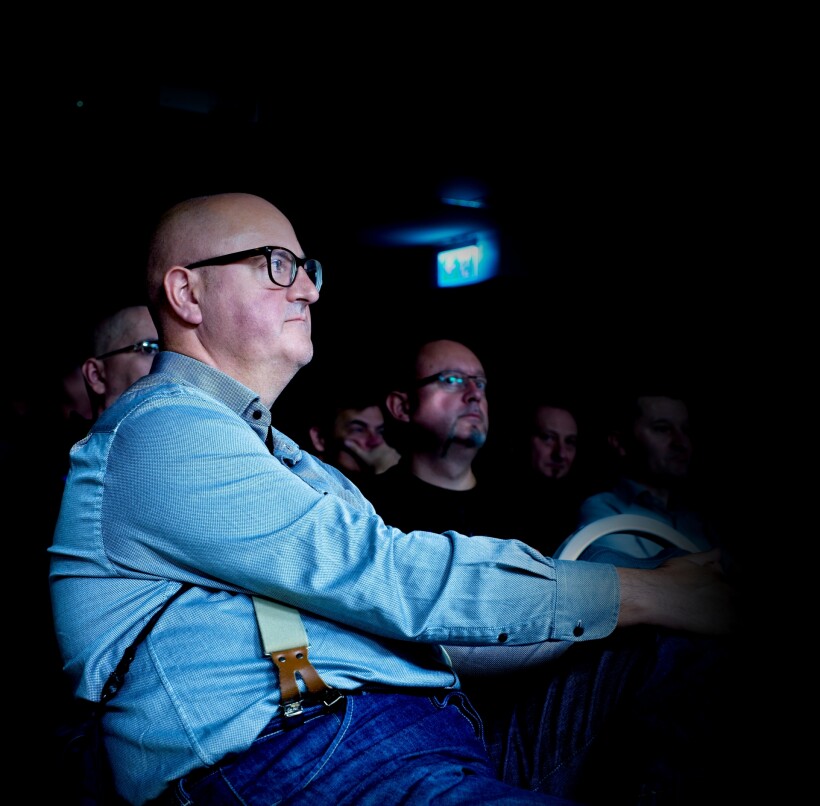
The man himself listening carefully to his own system during “Audiofil” presentation in Wroclaw i 2018
MD: Do you remember your first audio system?
RT: Of course, I do. Vividly…: Linn Axis transcription motor, Linn Akito tonearm, Shure V15-III MM-cartridge + Cyrus ONE + Celestion ”Concertino”” speakers + Philips CD160 (second generation16-bit CD Player with the TDA1541 chip set).
Payed with my first regular salary I earned as a university tutor. The gear I used to own before I acquired this fairly decent system was cheap crap and is not worth mentioning. With one truly spectacular exception though: the old Philips vacuum tube radiogram I used to own in my childhood. A fantastic and pretty outstanding if not avant-garde piece of audio gear, as I got aware decades later on. Featuring a 800 ohm (!!!) full rage oval paper cone driver driven by an output-transformer-less (OTL) vacuum tube output stage invented by Philips in the late 1950s.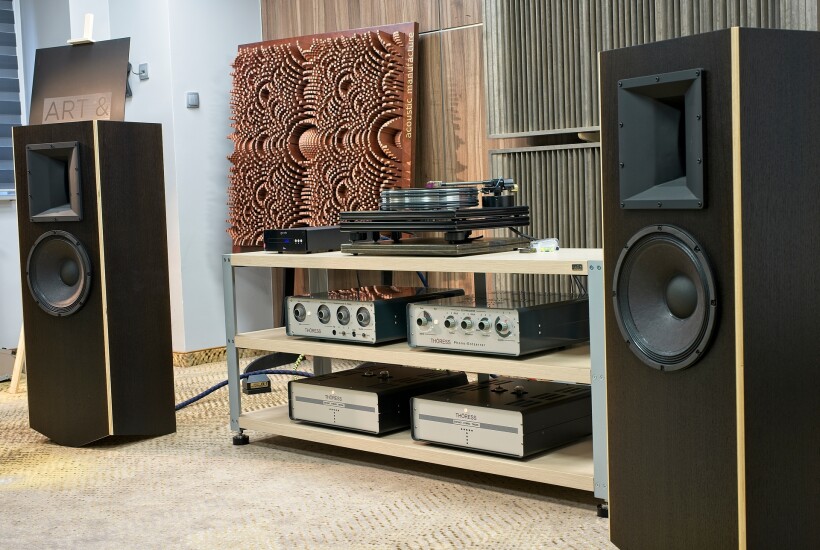
And the system at the 2018 Audiofil presentation
MD: What was the first audio device that you built?
RT: Mono amplifiers tailored around the legendary AD1 directly heated triode. Inspired by papers of Jean Hiraga published in the french DIY magazine L-AUDIOPHILE in the 1980s. Featuring paper-in-oil caps in the power supply, 6SJ7 pentodes in the driver stage and output transformers of questionable origine (and quality) I had purchased in an electronic surplus shop for low money. Getting hold of decent output transformers was a big (and bank breaking) deal at that time. Since such parts had to be imported from Japan, where (much in contrary to the situation in Europe) single-ended triode amplifiers still enjoyed vivid popularity among audiophiles. So I was literally condemned to study audio transformer design and make my own irons in order to push my projects forward. Over the years I have designed and manufactured almost any kind of inductive part one can think of: output, interstage, and MC step-up transformers, anode and filter choke(s) and all kinds of mains transformers. Partly for my own needs, partly for the DIY audio market in Germany. The respective coils have been made on a vintage winder machine made in 1964, curiously the year of my own birth.
Coil winder, filter choke, mains TRF Enhancer, OPT SE845
MD: When did you start your company and what was the first ever Thöress product you offered to the public?
RT: My company was founded about 25 years ago after I finished my studies (mathematics with physics as a subsidiary subject) at the RWTH University of Aachen. My laboratory is located in the center of Aachen in walking distance to the famous Cathedral. Aachen is a city with about 250.000 inhabitants located very close to the German border right at the spot where the territories of Germany, Belgium and Netherlands meet, about 50 miles away from Cologne and Düsseldorf.
The first product I built in a small series was a preamplifier with integrated phono stage. Just as one would expect from a vinyl guy like me, no? The ancestral form of the later Full Function Preamplifier. Followed by 300B Monos (still equipped with tube rectification).
FFPre oldtimer, FFPre old lab sample, FFPre actual model I, SE300B Monoblock Initial Version
MD: When did you decide that tubes are the way to go to achieve the sound you wanted? I’m asking because, to be honest, your components, and I don’t mean only the phonostage but also amplifiers I had a chance to listen to, do not offer what is usually considered a typical „tube sound”, which means warm, lavish, midrange-focused sound.
RT: I am not into tubes so as to glorify or transfigure the sunken age of vacuum tube technology. Nor because I like the cosy campfire mood tube glow unarguable emanates. I dedicate myself to vacuum tubes, triodes in particular, because they are inherently linear amplification devices which in addition (like field effect transistors) offer the advantage of powerless excitation. So by their nature vacuum tubes are perfectly suitable for MINIMALISTIC, SINGLE-ENDED, ZERO-FEEDBACK circuit design. And that is what I am into and what I strongly believe in, as you know. Moreover, tubes are desirable because they exhibit matchless sonic beauty, when properly applied. Stereotype tube sound as you describe it, means nothing to me. That-s not what I am after.
MD: What are your priorities in terms of sound qualities? How do you want your devices to sound?
RT: I don’t want my gear to have a specific sound signature. In fact, I imagine it to completely hide away and let the music play. Let one forget about the system, conquer space and time and dive into the world of music. What appears as a modest claim at first sight is nothing less than the holy grail of audio design, as far as I see it.
MD: Did works of any famous audio designer inspire you or you got where you are today just by your own?
RT: Jean Hiraga was an influence, as I mentioned earlier. Another big influence was Morgan Jones, a contemporary master of tube technology and gifted book author. Not to forget Nelson Pass – despite he is not a vacuum tube man himself. Finally, I have to mention Stanley Lippschitz. This highly respected audio engineer has published a comprehensive and revealing paper about phono de-emphasis network design decades ago. The insights I have gained from his papers were of essential importance for designing the Phono Enhancer and also the phono stage integrated in my Full Function Preamplifier.
FFPre II
MD: How did you come up with this very particular, external design of all of your devices? Does the form follow function or is it a question of your taste, or your maybe your goal was for this design to differentiate your products from all the others?
RT: The appearance of my products is certainly in perfect accordance with my personal taste. And this is no wonder. Since all 10 components which nowadays form the THÖRESS product line have been primarily and initially developed to serve my own needs. I want my amps to be perceived as apparatus, Puristic Audio Apparatus as I call them. Whereas my speakers are meant to represent neutral and timeless pieces of furniture, appearance wise. This attitude naturally dictates a form-follows-function design approach. A welcome side effect of this design choice is that it sets my gear far apart from toy HiFi. I should also mention that the more or less subtle retro touch my products emanate are understood as a homage and tribute to the tradition of professional audio components from the early times of HiFi which I consider as a major root of my approach.
MD: Could you list products that you’re currently offering? I know you’ve been very busy so the website is not quite up-to-date, that’s why I ask.
RT: The product line comprises 10 products in 4 groups, as follows:
GROUP A:
Parametric Phono Equalizer (The Phono Enhancer).
Dual Function Line and Head Amplifier.
DFAmp
GROUP B
SE-300B Mono Power Amplifiers
SE-845 Mono Power Amplifiers
SE845 Open Lid
GROUP C:
F2a11 Integrated Amplifier.
EHT Integrated Amplifier.
GROUP D:
2CD12 loudspeaker, 95dB/W/m
1 D 66 speakers
MD: A question that I ask almost every audio designer that I talk to – measurements versus listening tests – do you use both these methods while developing a new products and if so do you consider any of them a more important one?
RT: Both methods. For amplifier and speaker design. However, listening tests are much more important to me than measurement. The later is a valuable tool when it comes to detecting mistakes and shortcomings. A help for getting things right, technically, which is only half of the battle, of course. I once heard of an audio engineer who proudly claimed that he never evaluates his amplifier creations by ear since eager measurements already made evident to him that they do sound fantastic. How ridiculous is that ??? I can assure you that I belong to a totally different guild.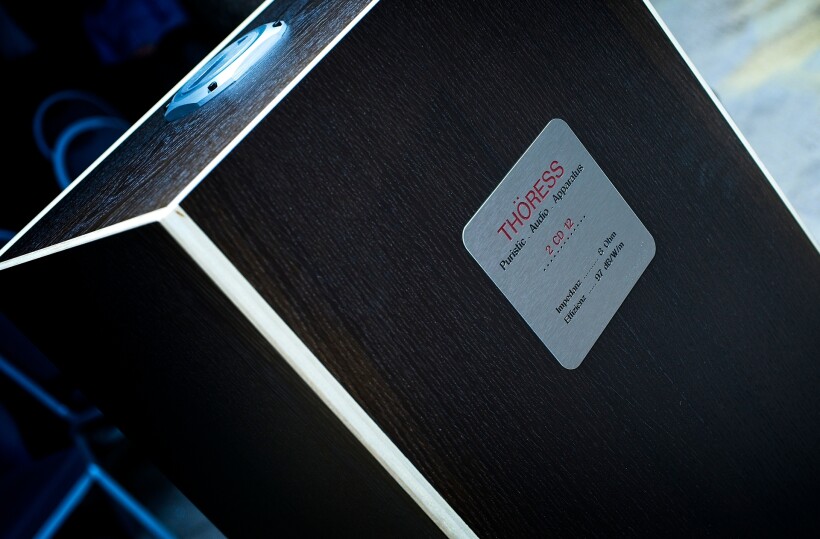
2 CD 12 speaker (2018)
MD: At some point you started to build not only electronics – amplifiers, preamplifier and phonostage – but also speakers. Why? Were there no suitable speakers for your amplifiers on the market?
RT: That’s exactly the point. In the early 1990s when I got started with exploring low power single-ended triode amplification domestic highly efficient speaker products from current production were not available. So I had no choice but employ vintage speakers. The first highly efficient speakers I acquired was a pair of Lowther Acousta horns with PM6 full range AlNiCo drivers from the mid 1960s (the foam seam of both drivers were in immaculate condition, quite a miracle). Later on I switched to Tannoy speakers based on the legendary Monitor Gold Dual-Concentric drivers. Both speakers had their merits but also annoying shortcomings. So apart from solving the output transformer problem, I was condemned to create my own speakers in order to progress with my single-ended triode amplifiers and let them sing.
My adventures in the land of high-efficiency speakers culminated in a truly crazy project: the snail horn project… Active 2-way dual-concentric horn. Main horn: huge vintage Western Electric (WE) spiral horn with original WE field coil compression driver. Concentric horn: very large constant directivity horn driven by a modern 2-inch compression driver. Amplifier: customized F2a11 Integrated Amplifier with crossover and speaker response correction networks incorporated in the amplifier circuit. Crossover point adjustable. Bass section: 2×12-inch cone drivers with open cabinet loading driven by a dedicated Amplifier with built-in low pass filter. My very first amplifier based on the EHT topology. The ancestral form of the EHT mono block, if you want. A truly intricate if not wild project. A contract work for a German customer.
Nowadays, highly effective speakers have become more readily available. However, I must say that only very few of these speaker products are pleasing to my ears (and eyes). Most of them suffer from all kinds of shortcomings such as lack of extension at both ends ot the audio band, incoherence, coloration, uneven response or dispersion problems (directivity). Fortunately, after years of development, I can offer two unique speaker models to music lovers which do full justice to the sonic capabilities of my amplifier products.
Speakers and parts
MD: You don’t introduce new products often, which is quite rare in today’s audio world where most companies feel like they have to keep customers excited by introducing something new every year. You don’t do that and yet, from what you told me, you’re quite busy fulfilling orders. So what’s your secret? You go against the grain and yet it seems to work for you really well.
RT: There are still people out there who are able to distinct between an audio product made to fit into the stereotype marketing schemes of the high end audio industry – and labour of love and devotion. True music lovers who have the confidence to follow a path beyond the fashions of mainstream and request truly musical components with unique touch and soul. Rather than high-end status objects developed by engineers (who in the worst case have never attended a live concert in their life) and product designers who were constrained by marketing criteria. People who are bored an sick of bridgeable 1000 Watt amplifiers, phono stages with touch screen control and other excrescences of audio alchemy. That is probably the secret.
MD: When, once in a while, you start to develop a new product where does an idea of it come from? Do you listen to suggestions from distributors and/or customers or an inspiration comes from somewhere else?
RT: Actually, most of the ideas regarding the concept and the product line, were already more or less clear in my head when I founded the company. Even the idea of the EHT principle, which I consider to be the purest form of a single-ended triode topology with the highest possible sonic potential. When I decided to launch a new product, it has always been for the sake of filling a gap in the existing product line. The last two product I have launched were the EHT Integrated Amp and the EHT mono blocks. Now the line is complete. An perfectly meaningful. Whereas each product has reached it’s evolutionary dead end.
EHT Integrated, EHT Mono, MTransf EHT Mono
Still there are ideas rumoring in my head…One idea gets back to me once in a while. Dynamic Expansion. Years ago I was working on a monophonic phono preamplifier with Volume Expansion Function. With adjustable expansion and selectable decay and release times. Quite a wild stuff. A true sound machine. A volume EXPANDER is a device which is meant to restore the original dynamic range of recorded music. It mirrors the effect of volume COMPRESSION, as it is widely applied in sound studios. An expander amplifier roughly spoken, increases it’s gain when the program gets louder and falls back to the former gain when the wild passage in the program is over. In principle it is a voltage controlled amplifier driven by a subsidiary signal derived from the dynamic envelope of the program, so to speak. My circuit was rather adventuresome but the sonic results I have obtained with my Phono Expander were remarkable, to say the least. My respective notations and a heap of articles on the subject are still kept in the drawer. Perhaps I come out with a Phono Volume Expander one day. Perhaps. Did you know that in the 1940s there were radiograms (made by RCA, for instance) for domestic use which featured a volume expansion function? Is that not intriguing?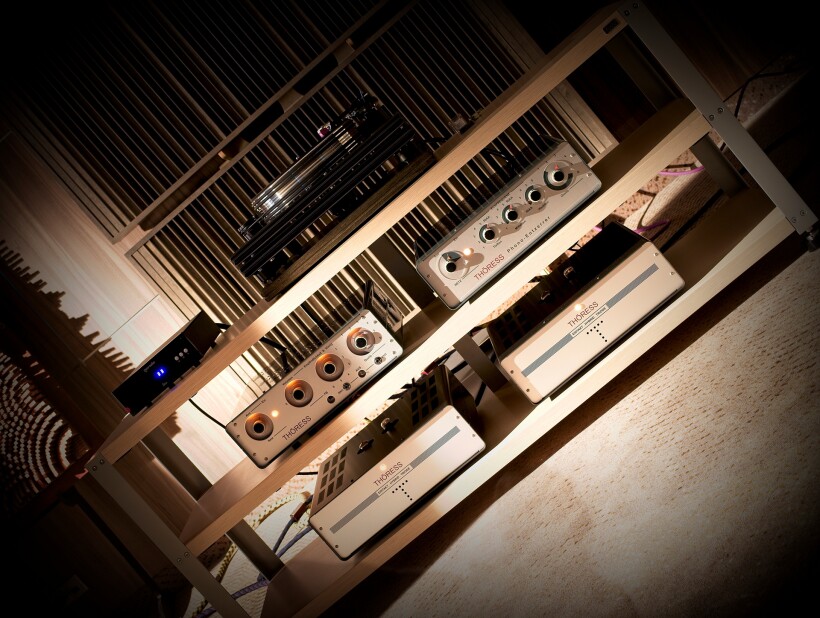
EHT monos, preamplifier and Phono Enhancer presented during Audiofil 2018
MD: It definitely is. If, some day, you do realize this project please do remember about me – I’ll be dying to check it out. Let’s get to the subject of my review, the Phono Enhancer. What makes it special feature-wise are these three knobs that allow user to change settings of the equalization curve. There are some phonostages that allow users to choose more than one (standard RIAA) curve, but apart from your device I know only one, the AirTight ATE 3011, that offers more than simple equalization curve selection, but also a possibility to mix parameters between them. How did you come up with this idea and what did you want to offer your customers with it?
RT: I own quite a few mono records. Some off which do sound phenomenal. While others suffer from tonal imperfections. The aim was to create a phono machine equipped with facilities for tonal manipulation in order to restore such imperfections. When I got started with the design of the Phono Enhancer it was already clear to me that the switchable de-emphasis curve approach was not the way to go for. Simply because, in practise, the tonal difference between individual vinyl records (even between those issued by the same record company in the same period of time) prove to be much more pronounced than the differentiation in tonality given by even the most distinctive de-emphasis characteristics established in the pre-RIAA microgroove era. In fact, the difference between these various characteristics is rather small, often negligible, whereas in the most cases the bass turnover frequency (the most crucial edge frequency) is 500Hz. Michael Fremer pointed out in one of his articles that switchable de-emphasis characteristics on phono devices are not only useless but irritating and puzzling to the user. I totally agree with Fremer’s point of view.
On the other hand, I found that conventional bass-and-treble tone control is much too coarse for the kind restoration facility I imagined (apart from the fact that it is sound destructive and goes along with clumsy circuitry). So I formed the concept of introducing tonal manipulation via edge frequency SHIFT, rather than creating boost and attenuation facilities in the context of a FIXED edge frequency, as it is the case with conventional tone control. Hereby the crucial control parameters are naturally given by the 3 edge frequencies (bass, middle and treble) of the de-emphasis characteristic, of course. And this idea readily turned out to be most fruitful and indicated the road I was to follow. Tone control by shaping the de-emphasis curve itself without any additional clumsy circuitry. Minimal and puristic. Just the kind of circuit topology which pushes up my heartbeat.
MD: Could you elaborate a bit on the design of the Phono Enhancer?
RT: Tying in to the above comments, I can tell that the crucial point was to create a topology which allowed to control the edge frequencies of the de-emphasis characteristics independently of each other by means of varying resistor values. The favourable control range of each dial has then been determined and optimized by ear trough evaluating hundreds of vinyl records with my laboratory sample. Just as it behooves for a practitioner and music lover like me.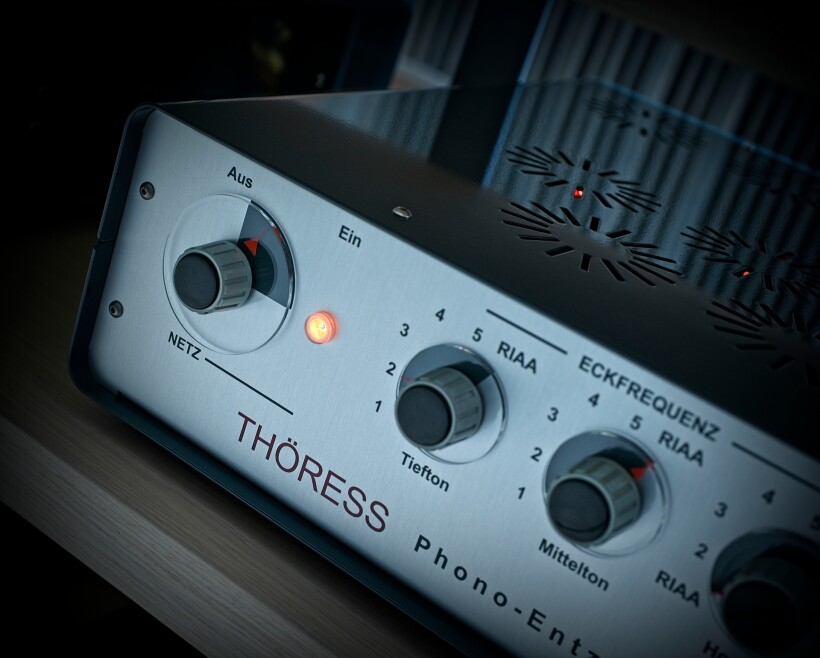
The beautiful Phono Enhancer
MD: I know that over the years you’ve introduced some upgrades or enhancements to the phonostage – could you elaborate on them, especially on the current version that I got for the review?
RT: The main concern was not so much to improve sonics but to simplify the circuit without sacrificing sound quality or compromising signal to noise performance. I wanted to determine the infimum (mathematical term for the greatest lower bound) of the concept, so to speak.
The MKI units still relied on 8 triodes in total, distributed over 5 glass envelopes, 1xPCC88+2x12SN7GT+2xPC86. Whereas MKIII Enhancers (the model you have reviewed) feature only 4 triodes in 3 glass envelopes, 1xPCC88+2x6J5GT. Purely active MC phono amplification with excellent signal to noise performance with a modest lot of 2 triodes per channel operated (class-A) at high idle current. A good example of a how minimalist circuit can be further condensed down to the bones. So why should one pass the signal through three OPAmps (operational amplifier ICs) each of which is composed of an army of at least 30 individual on-chip transistor operated at piddly idle currents. As it is done in numerous phono devices which are claimed to be high end products?
Moreover, after reconsidering the implementation of the tone dials I have found a way to completely abandon residual switching noise (still present in MKI and earlier MKII units).
MD: Could you tell our Readers what is your favorite music? Maybe you could name some artists and/or albums you personally particularly value.
RT: I like all kinds of music: Classical, Jazz, Rock, Blues, Metal, Fusion, Funk… And I am always keen on extending my horizon in this or that direction. My latest discoveries were…
The Funky Knuckles (Neo-funk),
Leopold Silvius Weiss (Lute Virtuoso and Composer, coeval of J. S. Bach),
Moon Child (Neo-Soul from California),
Electrodeluxe (Acid Jazz from France, the first 3 albums, the later albums are much weaker),
R3 Special Big Band (fantastic easy listening big band Jazz with a Latin touch).
Considering the variety of musical styles mentioned above, a very unique band comes to my mind: GENTLE GIANT. A legendary progressive rock (???) band from the 1970s I truly ADORE. The band members themselves are true giants in music, who have managed to integrate all kinds of styles into their own musical language. Seamlessly. Hard to believe but true. Please check them out.
The center of gravity of my musical interest is J.S Bach. The c-minor Passacaglia and Fuge and the 6 Trio Sonatas for organ, the Saint Mathew-s Passion, the Mass in b-minor, the Suites for harpsichord, just to mention a few well known examples from the extensive cataloge of Bach-s masterworks, are pieces of music I have heard hundreds of times and they have never failed to excite me like a child. Hardly a day passes on which I have not occupied myself with Bach-s music in this or that way…listening, studying, playing.
MD: Thank you for your time and congratulations on your phonostage – spoiler alert – it is fantastic!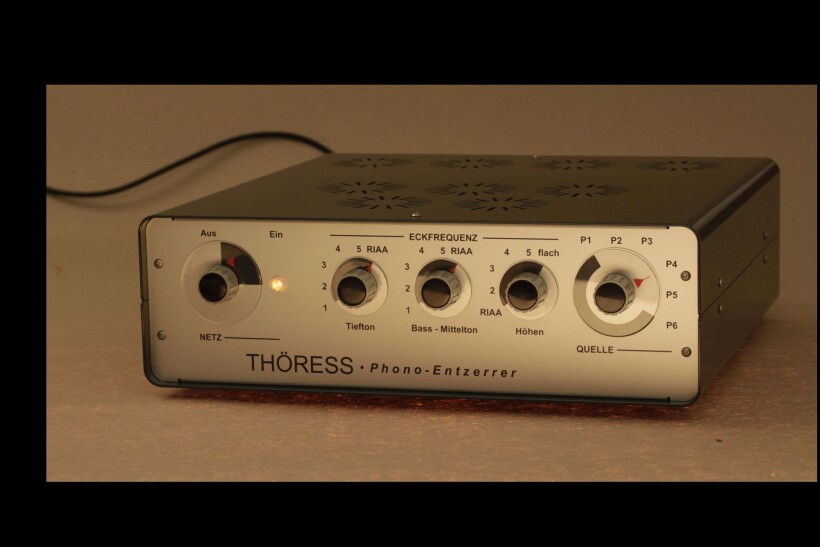
Most photos courtesy of Reinhard Thöress.
Manufacturer’s website: Thoeress
Polish distributor’s website: Audio Atelier


